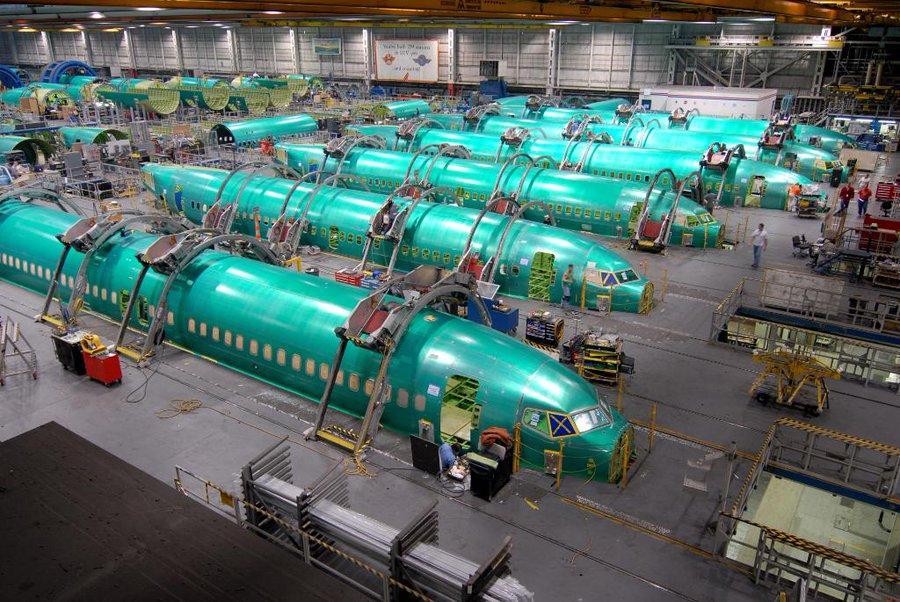Forget Vaccines, It’s All About Too Much Inventory In Aerospace | ワクチンは関係ない。航空業界の過剰在庫が問題だ

新型コロナウィルスのワクチンへの期待が高まっている。ワクチンの開発完了により航空旅行需要が一気に回復し、これまでいわれていた2023~25年よりも早い段階で以前の水準に戻るという期待を元にした、強気の投資理論がウォール街で注目されている。
しかし、航空宇宙メーカーの役員室や会議室では、そのような根拠のない熱狂は見られない。
なぜなら、これからの2~3四半期は、メーカーや航空会社、部品やサービス関連企業にとって、これまでとはまったくの別世界が待ち受けており、それがハッピーエンドになるかどうかも分からないことを、業界の首脳陣は認識しているからだ。その理由は明白で、サプライヤーやメーカーがコロナ危機以前の操業レベルに戻るには、まず山のように備蓄されてしまった在庫を処理する必要があるためだ。
この在庫は数年かけて消費されることになり、つまりサプライチェーンが回復する前に、現状がさらに悪化する可能性もあるということを意味する。
「我々はいくつかの倒産を見てきたが、現時点では驚くほど少ない。本当にごく数社だ。ただ、その理由のひとつは、我々がまだ大きな流れの途中にいるからだろう。737MAXの飛行停止に続き、12月にボーイング社が発表した減産はあまりに急で、対応する時間がなかった」と語るのは、 Spirit AeroSystems社のCEO兼社長・ Tom Gentile氏だ。
同氏は11月のインタビューで、こう続けた。「我々は全ての発注を再度見直した。そして今、サプライヤーの在庫が動き始めたが、回復が進み生産量が拡大していく中で、これは彼らにプレッシャーを与えることになるだろう」
金融アナリストや業界アドバイザーの中には、2022年にかけて前向きなトレンドが続くと見る者もいる。その理由のひとつは、ボーイング社・エアバス社が年内に月産約60機を目指す動きにサプライヤーも追従していることだ。もうひとつは、サプライヤーを支えるために、両メーカーが現在の生産量に必要とする以上の部品を購入することで需要を牽引しているからだ。
Jefferies社の Sheila Kahyaoglu氏およびEllen Page氏は「民間機メーカーにおいて最大の問題は、生産数がデリバリー数を上回っていることで、これによりメーカー内で在庫の積み上げが起きている。2021年にかけて在庫が消費されるためには、1)デリバリー数が我々の予想を上回る、2)ボーイング社・エアバス社が生産量を減らし、市場を均衡させる必要がある」と述べた。
それぞれのサプライヤーが在庫の放出によりどの程度打撃を受けるかは、自社製品の代替不可能性、特定のエンジンや機種の人気度、リードタイムと流通在庫、ワイドボディ機/ナローボディ機への人気の偏りなどといった点に左右される。特定のケースにおいてはこれが明白な指標となり、代表例がボーイング社が抱えているデリバリー前の機材(増え続ける787、450機以上の737MAX)、航空会社が地上保管している380機以上の737MAX、Spirit社がボーイング社向けに保有する130機の737MAXなどだ。しかし、複雑な業界における不確実な将来を見通せているのは、最先端のメーカーの中でもごく少数だろう。
これではサプライヤーの疑問は解消されず、それ以外の者はなおさらだろう。初期の努力はすでに動き始めている。Jefferies社の2人は、10月に TransDigm Group社が主催したイベントで 「メーカー各社は、来年も民間機販売数が18%低下することを受けて、今後数年間の減産に踏み切ると考えている」と述べた。
Canaccord Genuity社が2020年下半期に航空宇宙防衛分野のサプライヤーに実施した調査によると、最大の懸念事項はコロナ危機に関連したサプライチェーンへの圧力だ。上半期の調査では、737MAXの生産停止および回復の長期化がトップだった。
10月のイベントでは、Cowen社のアナリストも以下のように同調した。「在庫の積み上げが解消されれば(多くのサプライヤーでは2021~2022年になるだろう)、サプライヤーにとってのメーカーによる民間機の売り上げは増加するが、ボーイング社・エアバス社の生産量がピークを迎えても、売上規模はコロナ危機以前の30~50%程度に留まるだろう」
Gentile氏は、12月2日に開催されたCredit Suisse社の投資家向け説明会で「航空宇宙業界の成長には、常に課題がある。しかし、良いニュースは、我々は必要な資金・インフラ・設備をすでに持っているということだ。我々は人材を雇用し、育成してきた。一度は解雇することになったが、再び雇うこともできる。よって、課題は材料とサプライチェーンにあるということだ」と語った。
Aviation Week Intelligence Network (AWIN) のメンバーシップにご登録いただくと、開発プログラムやフリートの情報、会社や連絡先データベースへのアクセスが可能になり、新たなビジネスの発見やマーケット動向を把握することができます。貴社向けにカスタマイズされた製品デモをリクエスト。
The vaccines against COVID-19 are raising hopes and Wall Street is abuzz over a “light switch bull case” investment thesis where commercial air traffic surges back and business returns to normal sooner than 2023-25.
But you will not find irrational exuberance in boardrooms and corner offices of aerospace manufacturers.
That is because industry leaders understand that the next several quarters will be an entirely different story for makers of airliners and their parts and services—and whether it has a happy ending remains to be seen. The reason: there is a mountain of backed-up inventory to be worked through before suppliers and OEMs can ramp back to anything close to where they were pre-pandemic.
That stockpile will have to be absorbed in coming years, and that means things could get worse for the supply chain before they get better.
“We have seen a couple of bankruptcies, but surprisingly few at this point, only a couple, really,” Spirit AeroSystems CEO and president Tom Gentile said. “I think part of that, though, is where we are in the cycle. The MAX grounding and then the subsequent pause in production that Boeing announced last December was so quick that we didn’t really have time to react to it.
“We’ve re-adjusted all the purchase orders now,” the Tier 1 CEO continued during a November interview. “And so now you’re going to start to see some destocking at the suppliers that will actually put them under some more pressure as we go forward and as production rates increase.”
Several financial analysts and industry advisers see a rolling trend that could last well into 2022. One reason is because the commercial aero supplier base was geared for monthly production rates of around 60 aircraft at Airbus and Boeing heading into 2020. Another reason is because both OEMs continue to demand-pull far higher rates of inventory than is necessary for current production to buttress suppliers.
“In commercial OE, the biggest issue is that current production rates are in excess of delivery rates, causing inventory builds at OEs,” said Sheila Kahyaoglu and Ellen Page of Jefferies. “Heading into 2021 for inventory to unwind, either 1) deliveries must exceed our estimates, or 2) Boeing and Airbus will have to feather down production to move the market in equilibrium.”
How hard individual suppliers will be hit by destocking inventory depends on several factors, including fungibility of their products, specific engine or airframe exposure, lead times and channel inventories, and widebody or narrowbody exposure, among other factors. In some cases, there are obvious indicators, such as Boeing’s growing collection of undelivered 787s and over 450 737 MAXs, as well as the 380-plus parked MAXs at operators combined with Spirit’s 130-shipset stockpile it is holding for Boeing. But because of industry’s complexities, only a relatively small group of people inside the leading OEMs may have good insight into the amount of slack in the system.
That leaves suppliers possibly guessing, and even more so everyone else. Initial efforts are emerging. “We assume that the OEs will feather down production over the next few years leading to another 18% step down in commercial OE sales next year,” the Jefferies duo said of TransDigm Group in October.
Pandemic-related pressure on the supply chain remains the leading concern, according to Canaccord Genuity’s aerospace and defense supplier survey for the second half of 2020. That compared with the first-half survey, when concerns were led by the MAX’s production halt and prolonged recovery.
“When the de-stock abates—which for most suppliers will be sometime in calendar 2021 or 2022—commercial aero OE sales will rise for suppliers, but to a level below (30-50% below) that seen in the pre-COVID (2019) period when Boeing/Airbus production rates peaked,” Cowen analysts echoed in an October report.
“There’s always a challenge to ramp in aerospace,” Gentile told a Credit Suisse investor conference Dec. 2. “But the good news is we’ve got all the capital, all the infrastructure, all the tooling in place. We had hired all the people and trained them. We’ve laid them off, but we can recall them. So, the challenge is going to be the material and the supply chain.”
